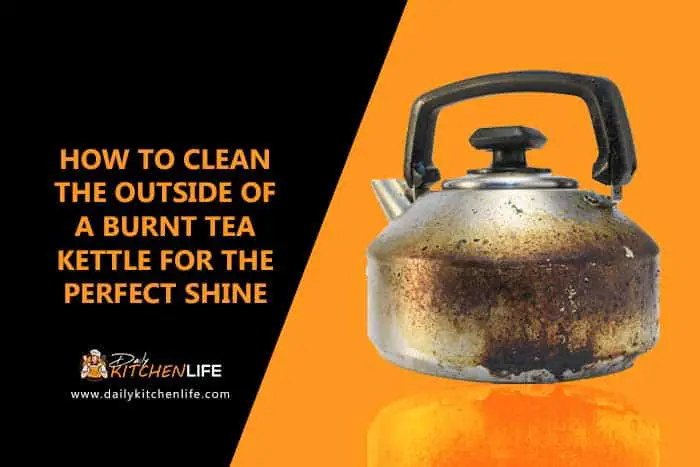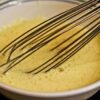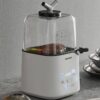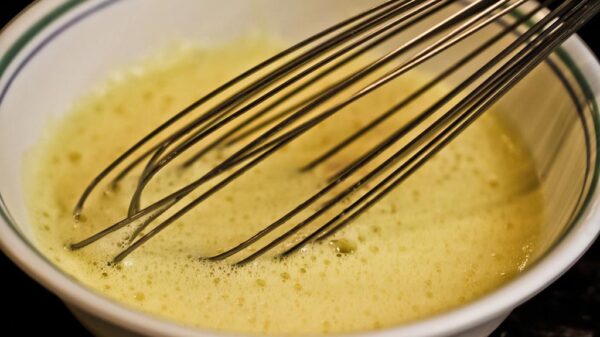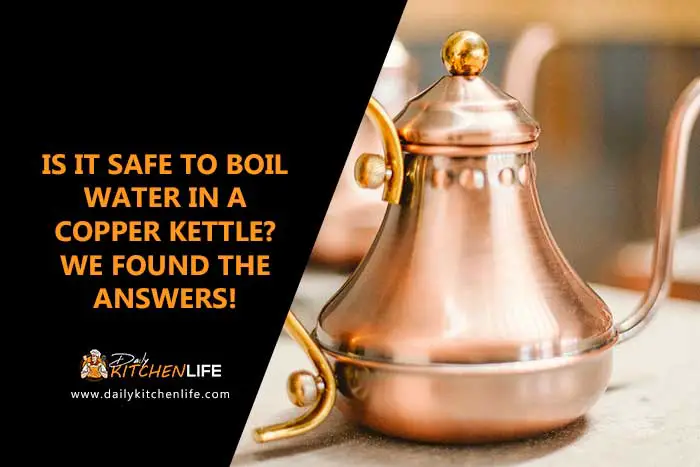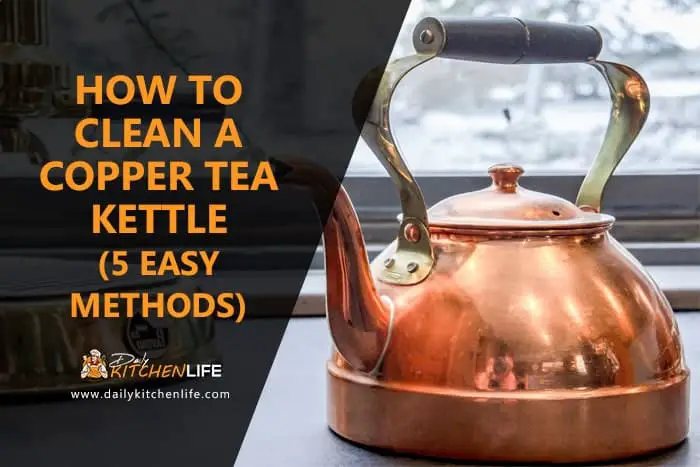You know the guests that come over whose eyes are always dwindling on your accessories and furnishing of the room? Looks like they will gobble up every detail of the room with their eyes, right? For those alert eyes (and for the overall hygiene and safety of yourselves), you need to keep your crockeries clean.
So do you know how to clean the outside of a burnt tea kettle? You will need to prepare a combination of baking soda and vinegar and scrub your kettle bottom with it. After that, gently washing with detergent will complete the task.
This will work for enamel, stainless steel, and electric kettles. But does using burnt kettles really pose health issues? Not unless the water is boiled dry.
How to Clean the Outside of a Burnt Tea Kettle?
Yes. To save yourself from embarrassment, you need to clean it. In order to clean the outside of a burnt copper tea kettle, you will need to scrub it off using dish soap. If it is more stubborn, a concoction of vinegar and soap will be of great use to soak, dissolve and wash away the scorch marks.
Here are the detailed steps:
- Start by washing the kettle normally to remove unwanted food debris that can go away without the need for a scrub or a strong acidic mix. Not removing unwanted residues could cause unwanted reactions, and we don’t want that!
- Now using dish soap and a nylon scrubber or a stainless steel scrubbing pad, rub the bottom of your stainless steel kettle. You will need to wash the kettle as you scrub and continue this loop till no longer debris is coming out from just scrubbing. How will you clean scorched stains on a stainless steel kettle? In order to clean a stainless steel kettle, you can use stronger and abrasive cleaning wires.
- Now soak your kettle in a lemon and vinegar solution for 10 minutes, and scrub to reveal a clear kettle bottom!
How will You Clean the Outside of a Burnt Enamel Tea Kettle?
For this, you will need a non-abrasive scrubber that doesn’t ruin your beautiful enamel coating, baking soda, dishwashing soap, and laundry detergent.
You will need to do the following:
- Create a warm soapy mixture with your baking soda, dishwashing soap, and hot water. After a couple of minutes, take any soft scrubber other than a copper mesh to scrub away the debris as the enamel kettle sits in the warm water. This is going to get away with most burn marks.
- Or, you could try using biological laundry detergent to soak the enamel kettle in less water than before. Biological laundry detergents have enzymes that can break the burnt particles and ease your scrubbing as well as de-staining.
How will You Remove Burn Marks Outside an Electric Kettle?
So you learned about stainless steel and enamel. But you need to know how to clean a burnt electric kettle as well. For the record, it requires you to do some soaking in hot water and soap and then scrubbing it off with baking soda.
You’ll need to do the following here:
- Soak your electric kettle in hot water and add a few drops of dishwashing liquid. Let it soak for 20 minutes to an hour max, depending on what levels of burn marks you have.
- As your debris loosens, add a layer of baking soda to the bottom of your kettle. Let this layer sit, and then scrub it off with a microfiber cloth till you see the spotless bottom.
- Wash the entire thing in regular water without any concoction this time, and you’re done!
Why do Kettles Burn?
There are 3 reasons as to why your kettles could be burning and creating the scorch mark: oils, hard water, and high temperature.
First of all, suppose you are not using your kettle so often but still see the bottom of it blackened. Do you leave your kettle upside down and cook oily food near it? This oil, fat, or grease can burn as you cook and stick to the bottom of the kettle.
Secondly, your tap water may be a source of hard water, including minerals such as calcium and magnesium, which harden and stick to the bottom of the kettle when you wash your kettle in tap water and directly place it on the stove. Or, as the water boils, it can accumulate in the inner bottom of the kettle and stain it. Similarly, an overflow of boiled water that messes not only your stovetop but also the kettle bottom could be a means of burning your kettle black.
Lastly, are you boiling water at a super high temperature? This uneven and high heating can cause burn marks too.
But whatever it is, it is not so uncommon that your kettle will burn and leave no stains.
Is a burnt tea kettle toxic?
A burnt tea kettle on the outside is not toxic for the tea that will be brewing up inside.
However, if the inside of your kettle has burn marks too, you will need to clean the interior by boiling water and white vinegar in a 4:1 ratio. Then let it cool and wash away as you would!
What happens if a Kettle Boils Dry?
Not all kettles that have been boiled dry are risky. Unless yours has a Teflon layer or a plastic handle or coated paint on the inside, or maybe even heat coils.
In that case, you should change the kettle.
Although it isn’t poisonous, you don’t want to be drinking rusty water. Again, since oxidation is worsened by heat, and a boiled-dry kettle must have seen high heat, you may not want to drink from it too.
Final Words
So you have learned about how to clean the outside of a burnt tea kettle. As we covered the electric, enamel, and stainless steel kettles, you could see that the basic principles remain the same: soak, scrub and wash.
The ingredients can differ and be mild, like dish soap or strong acidic mixtures of lemon and vinegar or baking soda and lemon.
Whatever the case, thorough cleaning and proper maintenance of your kettle, as well as the heat levels you put your kettles on, could mean a shiny and long-lasting tea kettle. Who doesn’t want that!
Check this also: Is It Safe To Boil Water In A Copper Kettle


